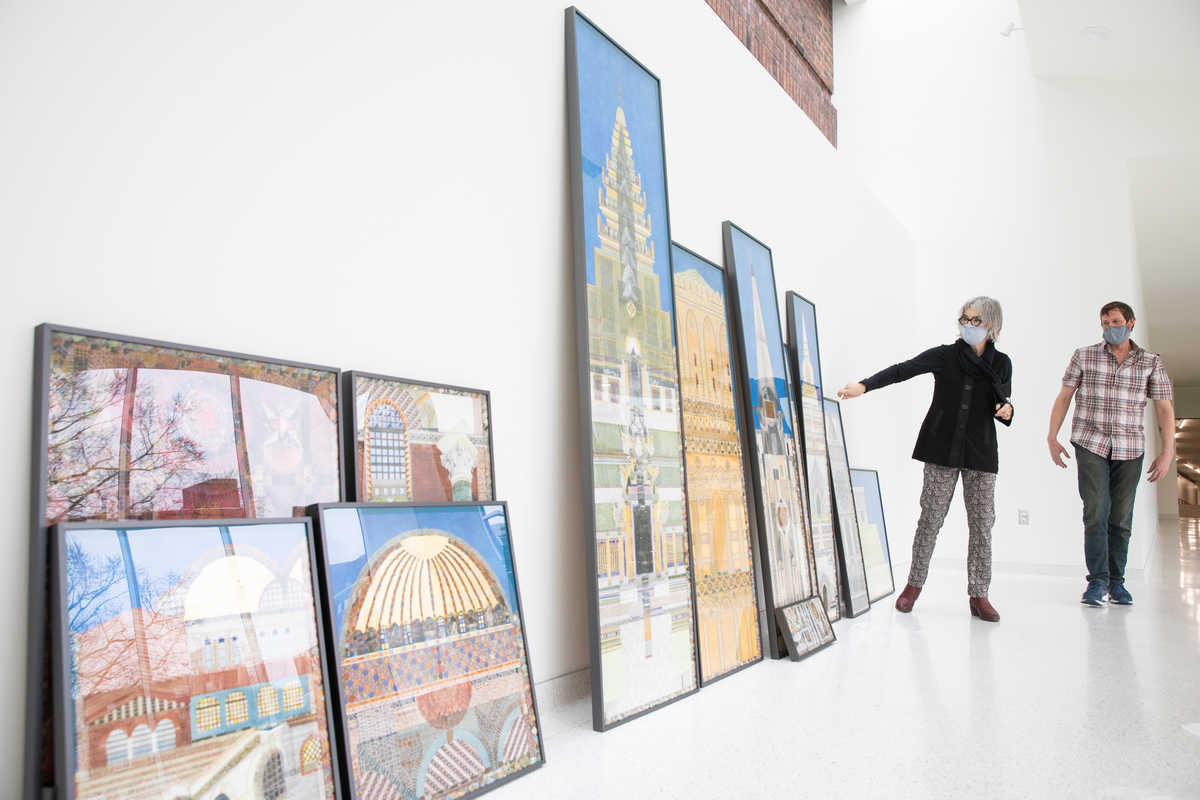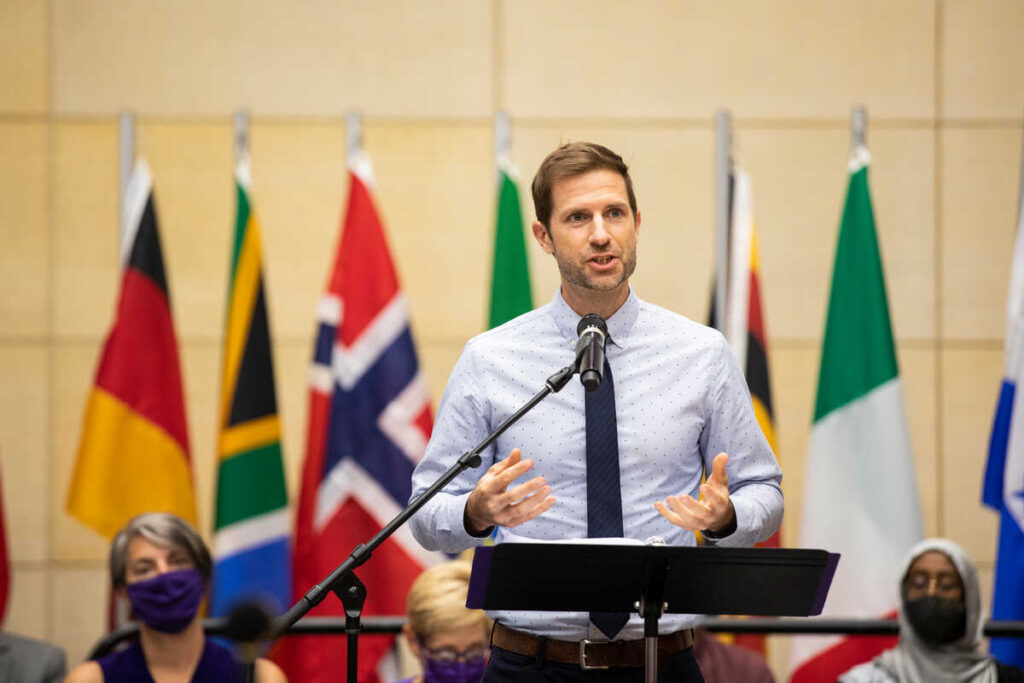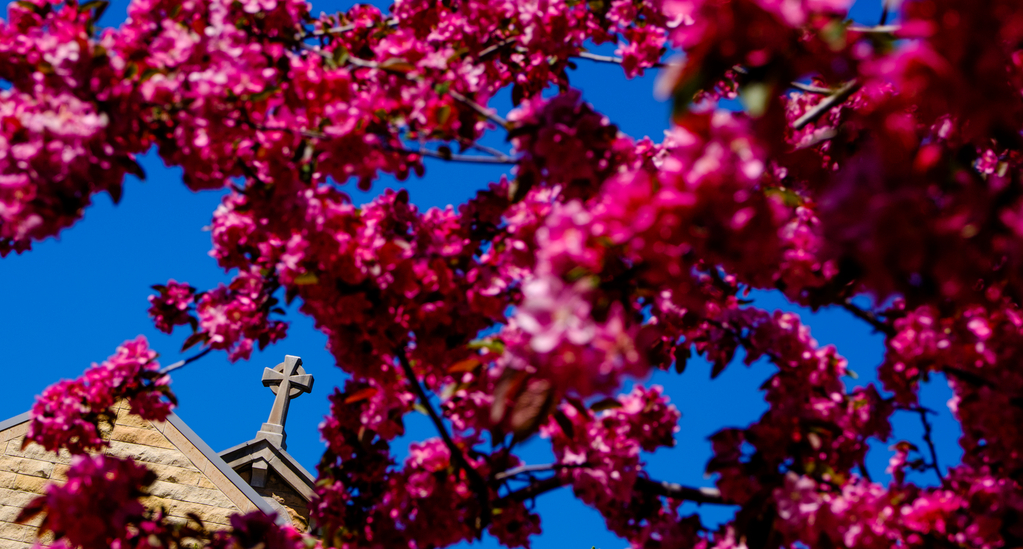In the southernmost alcove of the Hoedeman Gallery of Sacred Art, Mary Griep’s permanent installation is where architecture meets art. Just as tourists flock to architectural marvels in other countries – from the Chartres Cathedral in France to the Mayan Governor’s Palace in Mexico – now the St. Thomas community can take in the beauty of these magnificent buildings and others in the Iversen Center for Faith gallery showcasing Griep’s work.
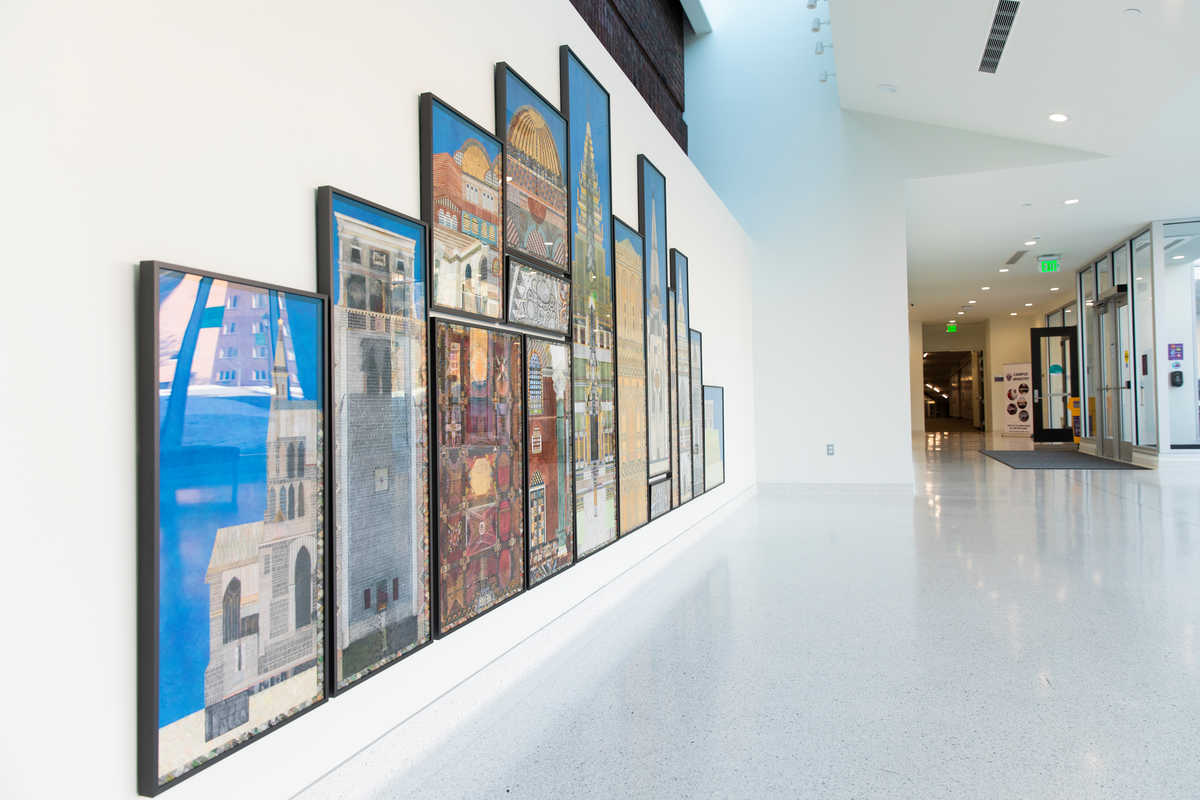
“Tell Me a Story” by Minnesota artist Mary Griep is 17 feet wide by 6.6 feet tall. Fifteen details from sacred buildings of several religious traditions across the world serve to uphold the multifaith nature of the Iversen Center for Faith. (Mark Brown/University of St. Thomas)
Griep’s “Tell Me A Story” exhibit portrays 14 sacred spaces from around the world: seven Christian traditions and seven non-Christian, including Judaism, Buddhism and Islam. The intricate, hand-drawn structures, many adorned with gold and silver leaf, are the physical representation of Griep’s decades long experience studying and drawing magnificent 12th and 13th-century structures located around the globe. It’s one wall, and a whole world, at the same time.
Griep says the installation is a snapshot of a particular time, embodying many different cultures and traditions. “Bringing them together is a way that they could be in conversation with each other,” she said. “What kind of stories can they tell us?"
Dr. Victoria Young, art history professor and department chair at St. Thomas, said because of its “incredible beauty in the depiction of diverse sacred buildings,” Griep’s work immediately stood out to the committee tasked with selecting the artist for this permanent installation.
“The Iversen Center for Faith was conceived to be a multifaith space for our campus, and it was important to reveal this in the artwork selected,” said Young, noting that Griep’s work also included structures sacred to the people and cultures of Hinduism, Greek Orthodoxy and Maya.
The “Tell Me a Story” permanent installation is derived from Griep’s award-winning series of drawings called the Anastylosis Project. Over the course of 22 years, Griep visited sacred sites to study the structures and conduct historical research. Then, she translated them into massive architectural drawings. Each drawing took Griep a year, sometimes two, to study and complete, from the floral motifs in marble-tiled floors to the tapestry-like carvings engraved on some exterior walls. The largest drawing in the Anastylosis collection spans 32 feet wide and is a detailed depiction of Angkor Wat, a temple in Cambodia.
To create her 17-foot-wide installation at St. Thomas, Griep selected portions from several works in the series of drawings. Color Space Art, a Minneapolis-based company produced scaled prints of the large originals. Then Griep worked on the prints to harmonize tone and color, using collage and gold leaf.
“When you see them, it's like going to a real place,” Griep said. “If you stand far away, you see the whole building, but to know anything about the details, you have to come up close. So, I'm always trying to get people to do both.”
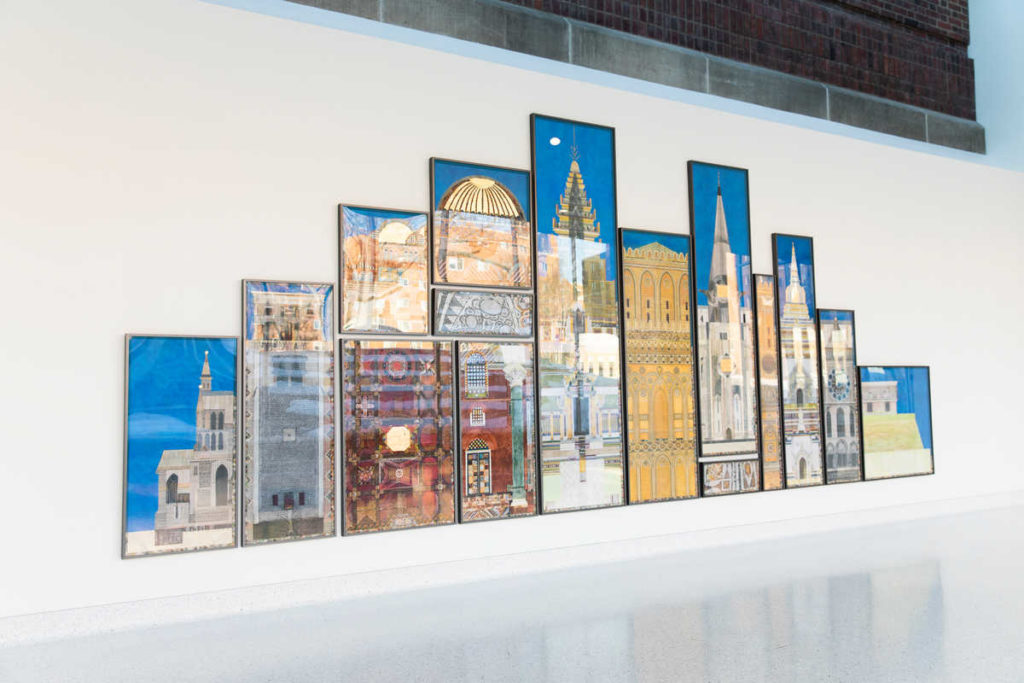
“Tell Me a Story” by Minnesota artist Mary Griep, 2020. 204” wide by 80” tall. Fifteen details from sacred buildings of several religious traditions across the world serve to uphold the multifaith nature of the Iversen Center for Faith. (Mark Brown/University of St. Thomas) 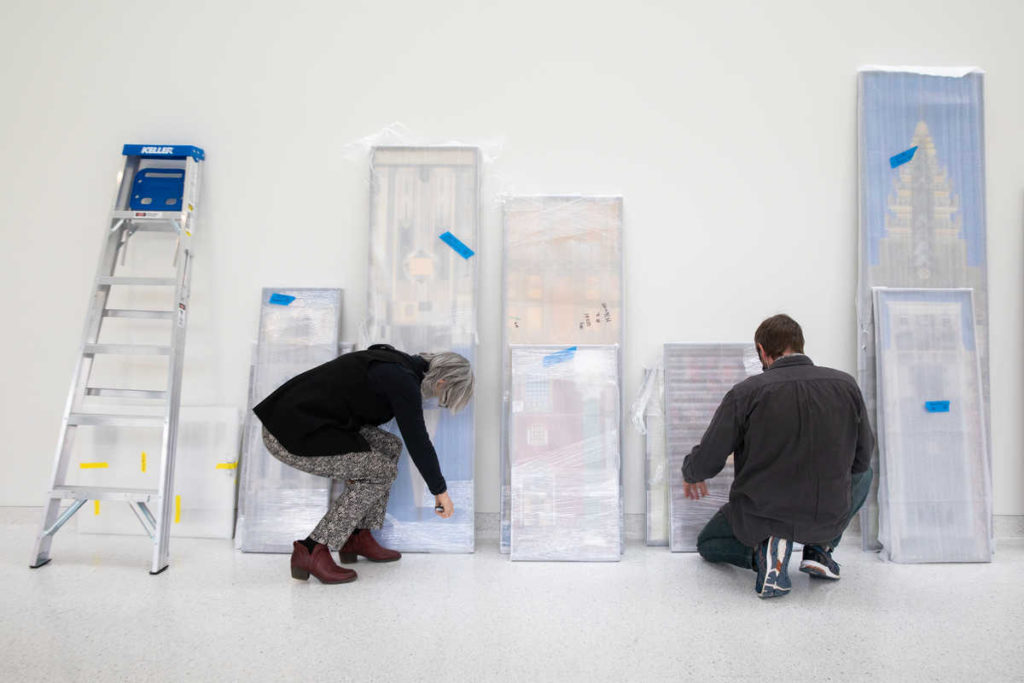
Artist Mary Griep (left) begins to unwrap pieces of “Tell Me a Story” with installation professional from Color Space Art and Imaging of Minneapolis. (Mark Brown/University of St. Thomas) 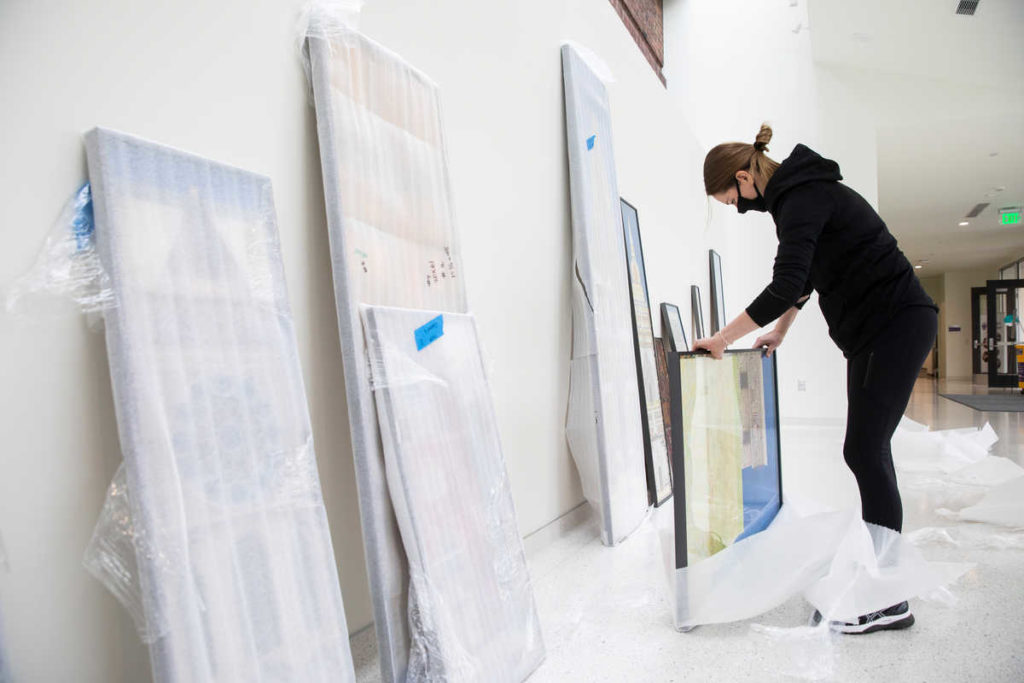
University Collections Manager and Curator Marria Thompson assists with installation of “Tell Me a Story.” The artwork by Mary Griep is now part of the university’s permanent art collection. (Mark Brown/University of St. Thomas) 
Artist Mary Griep was present and helped with the installation of her piece entitled “Tell Me a Story” in the Iversen Center for Faith’s Hoedeman Gallery of Sacred Art on the St. Paul Campus on December 15, 2020. (Mark Brown/University of St. Thomas) 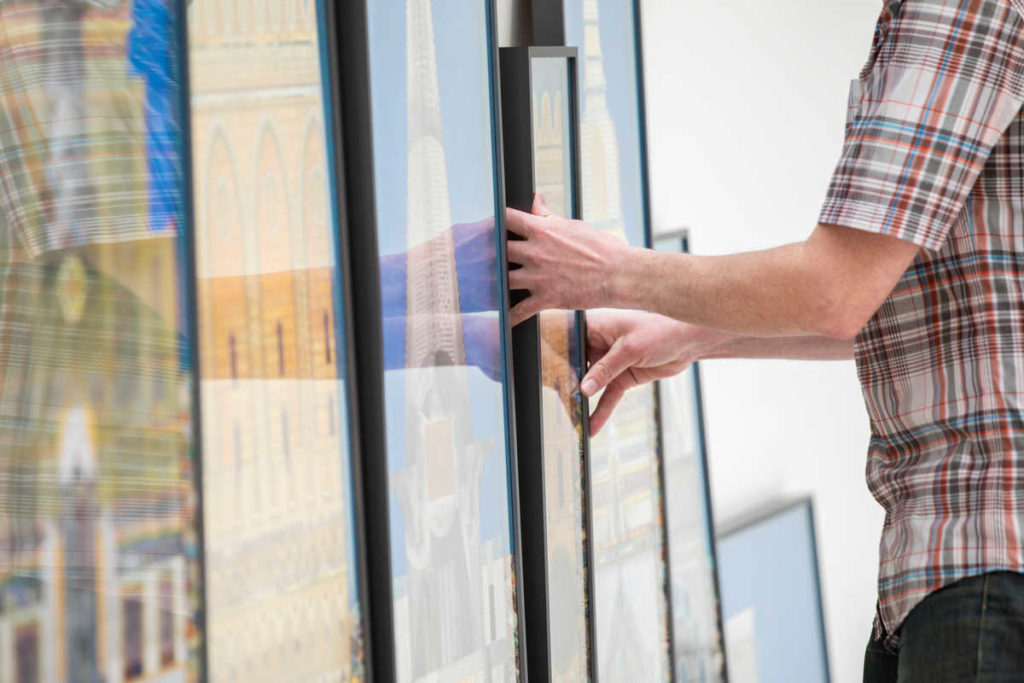
Artist Mary Griep usually works with Minneapolis-based Color Space Art and Imaging on the installation of her works. The hanging of each of the 15 pieces of the artwork had to be very carefully done to ensure proper connections among all the pieces to form one image. (Mark Brown/University of St. Thomas) 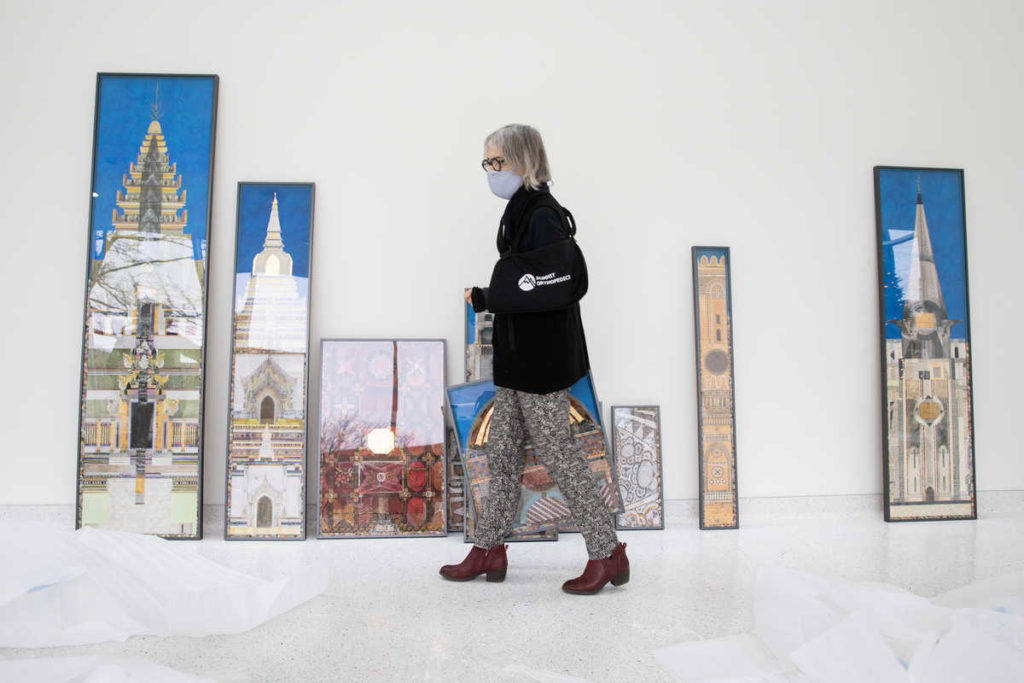
Artist Mary Griep during installation. Note the height of the Angkor Wat piece to her left, 80 inches. (Mark Brown/University of St. Thomas) 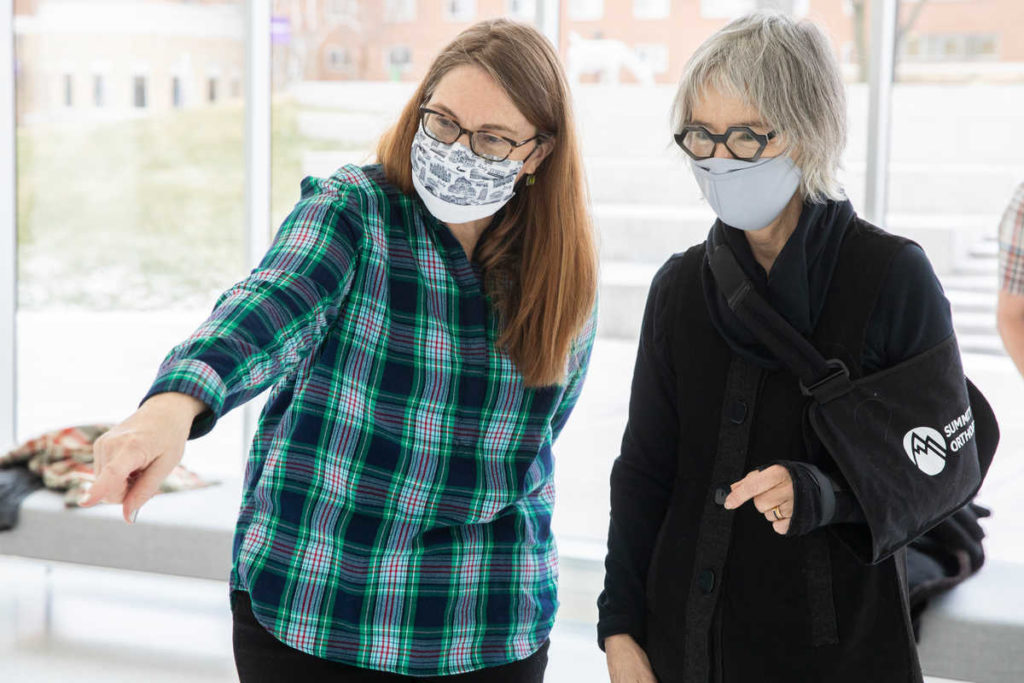
Art History Department Chair Victoria Young and Mary Griep discuss the details of Griep's work, “Tell Me a Story,” which is installed in the Iversen Center for Faith’s Hoedeman Gallery of Sacred Art. (Mark Brown/University of St. Thomas) 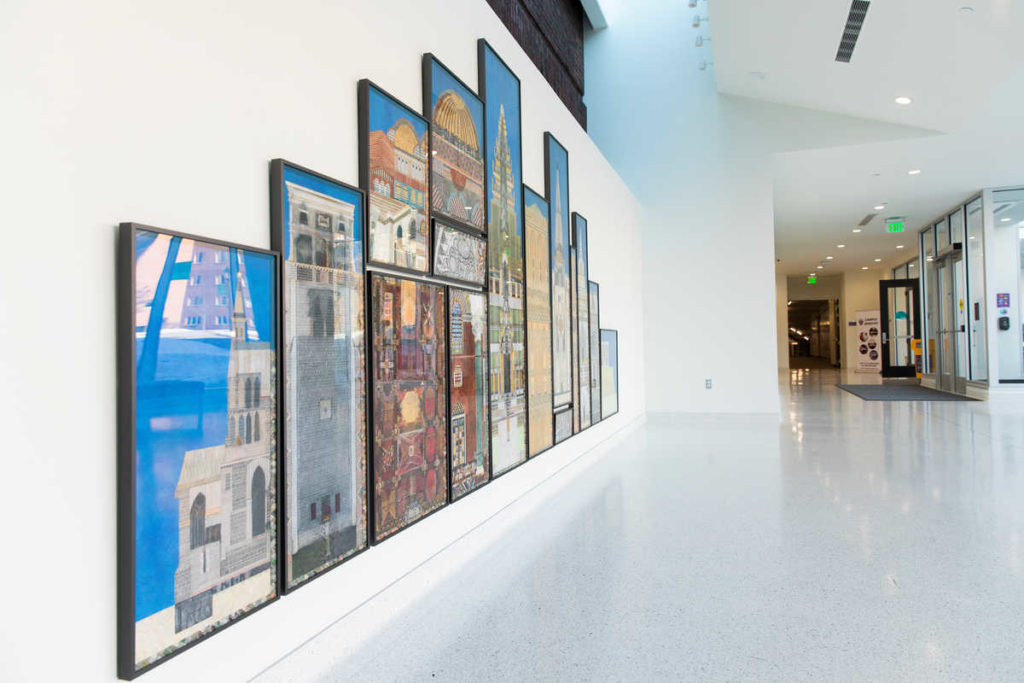
Artist Mary Griep's artwork Tell Me A Story hangs in the Hoedeman Gallery of Sacred Art in the Iversen Center or Faith. (Mark Brown/University of St. Thomas)
In many ways, the time spent drawing echoes the sustained, deliberate attention humans dedicated centuries ago to build the structure. Griep said while working on the project she had time to imagine their collective labor for a sacred cause.
"Often people who started working on a medieval building never saw the end product,” Griep said. “I am trying to mirror that. We've lost a little bit of that idea that we work for a larger goal, a bigger picture.”
“Tell Me A Story” visually brings to St. Thomas the intricate and ornate details of centuries-old churches, mosques, temples and synagogues that are a world away. They include sections of mulptile sacred spaces such as Thatbyinnyu, a Buddhist temple in Bagan, Myanmar (Burma) and Etz ha-Hayim Sinagogu, a Jewish synagogue in Sardis, Turkey. The eye-catching display is an invitation for the St. Thomas community to be curious about a different time, place and perhaps an unfamiliar culture and faith, said Griep.
“We don't know very much, as a culture, about these other religious faith traditions,” Griep said. “We don't really have a very good idea, in the 12th century, what the Mayans were thinking about, what the Celtic Turks were thinking about in central Turkey, what the Burmese were thinking about in Paragon.”
A professor emeritus of art and art history at St. Olaf College in Northfield, Minnesota, Griep said it was especially gratifying to see her work find a permanent home at a university where the stories, both centuries and decades old, can be discovered and rediscovered.
“It makes me really happy to have my work at St Thomas,” she said. “I’m hoping there's something that catches somebody’s eye, the shine of the gold leaf, or the diverse patterns. I'm hoping it's a point of conversation.”
